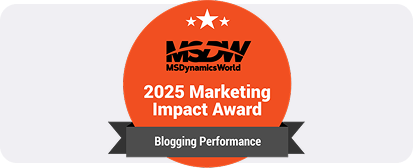Calculate net payroll in 2025 | Canada
Even though an employee may be earning a salary of 60,000 on paper, the reality of the paycheck changes when tax, benefits, and deductions are taken into account. If handled incorrectly, the discrepancy between the promised salary and the actual amount in the employee's bank account can lead to confusion and frustration.
That is the reason it is essential to understand how to calculate net payroll properly. It will also assist you in maintaining employee trust, staying compliant, and properly running payroll. The calculation of the net pay can be difficult to do manually, though technology has made it easier than ever. Using a gross-to-net payroll calculator, you can process payroll quickly and eliminate expensive errors.
In this article, we will discuss the process step by step so that you can be confident enough to convert gross salary to the correct net salary, which your team can receive on time.
However, to understand net pay, we must first examine where it is calculated and where it is deducted, i.e., gross pay and deductions. When you know these two, net pay is simple to calculate.
What is Gross Pay?
Gross pay refers to the sum of money that an employee has earned prior to deducting any amount. It includes:
- Salary or hourly wages
- Overtime pay
- Bonuses and commissions
- Any other extra earnings
For example, when an employee earns 70,000 a year, it is their gross pay. However, this is not what they bring home. Deductions come next.
What Are Deductions?
Once you have the gross pay, you have to subtract deductions. These are sums withdrawn out of employee earnings prior to payment of their final wages.
Deductions are subject to two broad categories:
1. Mandatory Deductions (Required by Law):
- Federal and provincial income taxes
- Canada Pension Plan (CPP) contributions
- Employment Insurance (EI) premiums
- Court-ordered payments, like child support
2. Voluntary Deductions (Optional):
- Retirement savings contributions (e.g., RRSPs)
- Health or life insurance premiums
- Health Savings Accounts (HSAs)
- Flexible Spending Accounts (FSAs)
Note: Mandatory deductions are fixed by law, while voluntary ones depend on employee choices.
Since you now understand the starting point (gross pay) and the deductions, net pay is easy to understand.
What is Net Pay?
Net pay refers to take-home pay or the amount that remains after you deduct all the other deductions from the gross pay. It is the money that the employees actually hold in their wallets or bank accounts.
The formula is simple:
Gross Pay – Deductions = Net Pay
It always follows the same formula whether you are using a payroll gross-to-net calculator or an ERP payroll system.
How to Calculate Net Payroll in Canada: A Step-by-Step Guide
Net payroll calculation is a sequencing process that requires all deductions and additions to be correct. The same steps apply when using a net payroll calculator or doing it manually.
The process is as follows:
Step 1: Start with Gross Pay
Start with gross pay. It is the amount of income earned prior to any deductions. This includes:
- Monthly or hourly wages.
- Overtime pay
- Commissions and bonuses
- Any allowances liable to tax (e.g., car allowance)
Example:
Suppose the employee makes 60,000 a year with monthly earnings; the gross pay per month would be:
$60,000 ÷ 12 = $5,000
When the employee is hourly and works 160 hours at 25/hour, then:
$25 × 160 = $4,000
The importance of this step: Any deductions you make later, including taxes, CPP, and EI, all rely on the amount of gross pay that is right.
Step 2: Apply Mandatory Deductions (Canada-Specific).
That is where the majority of employers require guidance since the rules of the Canadian payroll deductions are established by the CRA.
The three significant mandatory deductions include:
1. Federal and Provincial Income taxes.
2. Canada Pension Plan (CPP)
3. Employment Insurance (EI)
At this step, you have your gross-to-net payroll calculator running while you are subtracting the gross amount from the required deductions.
Step 3: Apply Voluntary Deductions.
We have now passed on to deductions, which are voluntarily withdrawn by employees. These can be:
- RRSP contributions
- Premiums on health, dental, or life insurance.
- Union dues
- Workplace pension plans
Certain voluntary deductions are pre-tax (such as RRSPs), so that they claim taxable income, whereas others are post-tax (such as union dues), claimed after tax has been paid.
Why it is important: Voluntary deductions make the payroll specific to each employee and affect final net pay.
Step 4: Include Any Bonuses or Adjustments
All employees do not just receive a salary. It may be commissions, performance bonuses, or reimbursements. These amounts should be added after the deductions because they increase the take-home pay.
Example: When the employee gets a performance bonus of $500 during this month, it must be added, and then the net total pay should be calculated.
Step 5: Calculate Net Pay
At last you put it all together:
Net Pay = Gross Pay – (Mandatory + Voluntary Deductions) + Bonuses/Adjustments
Example:
- Gross Pay: $5,000
- Mandatory Deductions: 1,200 (Taxes, CPP, EI)
- Voluntary Deductions: 300 dollars (RRSP, Insurance)
- Bonus: $200
Net Pay = $5,000 – ($1,200 + $300) + $200 = $3,700
This is the amount of $3,700 that employees can actually see in their bank accounts—the take-home pay.
How Technology Can Help You Get Net Pay Right
It does not have to be complex to manage net pay. Modern technology allows you to record work hours, deductions, and pay employees precisely, all without breaking Canadian payroll laws. Automated systems save time, minimize errors, and enhance overall efficiency as well. It will be a lot easier by using Microsoft Dynamics 365 Business Central, which is a full-fledged ERP system that combines payroll, time tracking, attendance, and benefits management all in one.
Let’s see how these features work together to get net pay right every time.
1. Time Tracking: Record Each Hour Worked:
Time tracking is essential in calculating net pay. Whether they are hourly employees or salaried employees, all the hours that are worked should be recorded appropriately. You may over/underpay without accurate tracking, and this may result in disagreements and payroll mistakes.
In Business Central, time tracking is incorporated within the payroll system. It allows the employees to work in-office or remotely and capture the hours, which are automatically recorded in the system. It implies no timesheets, fewer mistakes, and all time hours are payroll-ready.
2. Attendance: Track Time Off and Absences:
Attendance is also a factor of net pay. Vacation, paid leave, unpaid absences, or sick days influence the amount of home earned by the employees. Net pay is easy to miscalculate without proper attendance tracking.
Dynamics 365 Business Central enables employees to make requests for leave within the system. These requests can be approved or denied by managers, and the system automatically adjusts payroll to reflect time off. With the use of attendance combined with payroll, you can guarantee that all deductions or absence changes are made properly.
3. Integrated Payroll System: Automate the Entire Process:
A built-in payroll system is a game changer for calculating net pay correctly. Business Central combines all the payroll data under a single system rather than dealing with spreadsheets or calculating taxes and deductions manually.
Using Dynamics 365 Business Central:
Tax Calculations: Federal, provincial taxes, CPP, and EI are automatically computed as per the guidelines of CRA.
Deductions & Benefits: There are mandatory deductions (RRSP, health insurance, union dues, etc.) and voluntary ones, which are deductible automatically.
Payslips: Employees are provided with a clear pay statement including gross pay, deductions, and net pay.
Compliance: The system is compliant with the Canadian law of payroll calculations, CPP, EI, and rates of income tax.
ERP Integration: Payroll information is integrated with finance and HR modules to provide smooth reporting and analysis.
Note: This automation would allow you to accurately calculate net payroll, save time on administration, and work on your business instead of worrying about payroll mistakes.
How Dynamics Square Can Help
An accurate calculation of Canadian payroll can be tough due to evolving tax regulations, CPP, EI contributions, and other employee benefits. This is where a Microsoft Dynamics Partner, Dynamics Square, comes in.
Our focus is on the implementation and support of Microsoft Dynamics 365 Business Central to enable businesses to automate the payroll, HR, and finance processes.
With our expertise:
- You receive complete compliant payroll systems that meet the Canadian laws.
- Automated gross-to-net calculations save time and eliminate manual work errors.
- Time tracking, attendance, and payroll are fully integrated and provide you with real-time insights into employee costs.
- Employees are provided with the correct pay slips that display gross pay, deductions, and net pay, enhancing transparency and trust.
- Our team offers end-to-end support throughout the Dynamics 365 implementation process to make sure that your system runs well.
With the collaboration of Dynamics Square, you can concentrate on expanding your business, and we will take care of the challenges of payroll, deductions, and compliance. Ready to Simplify Your Payroll Process?
Contact us +1 778 381 5388 or info@dynamicssquare.ca and let us help you automate your payroll and ensure every employee is paid correctly and on time.



